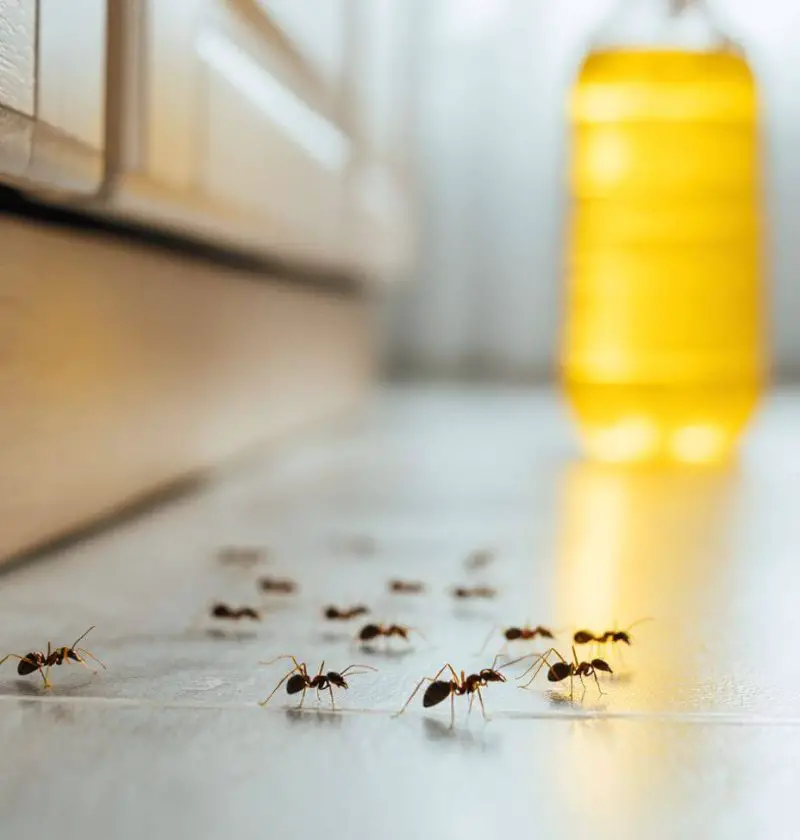You know how it goes. One day, your kitchen’s clean as a whistle — the next, a line of ants is marching in like they own the place. It starts with just a few. Maybe you ignore them. “It’s nothing,” you think. Then BAM — they’ve brought the whole extended family. If you’ve ever found them parading across your counter like it’s a buffet, you’re not alone.
The good news? You don’t need to run to the store or douse your home in harsh chemicals. With just a few everyday ingredients, you can whip up a homemade ant repellent that actually works. And it takes less time than reheating leftovers. Let’s get into it.
Why This Works (And Why You’ll Want to Bookmark It)
Before we get into the step-by-step, here’s the science-y bit — in plain English:
-
White vinegar throws off the ants’ sense of direction. They rely on scent trails to navigate and communicate, and vinegar basically scrambles their GPS.
-
Peppermint essential oil smells amazing to us (hello, spa day vibes) but to ants? It’s a total dealbreaker. They hate it.
-
Vegetable oil helps the mixture stick to surfaces longer and might even smother the little guys if they walk through it.
Bottom line? It works. It’s safe. And your kitchen won’t smell like a pesticide aisle.
Step 1: Whip Up the Ant Spray
Here’s what you’ll need:
-
½ cup white vinegar
-
½ cup water
-
1 tablespoon vegetable oil
-
10–15 drops peppermint essential oil
-
A clean spray bottle
To make it:
Just pour everything into the spray bottle, screw the lid on tight, and shake it like you mean it. Oil and water don’t love each other, so you’ll want to give it a good shake before each use.
⏱️ Total prep time: 4 minutes — tops.
Step 2: Spray Where the Ants Are Coming From
This part’s important — don’t just spray anywhere. You want to hit the entry points and trails.
-
Baseboards
-
Windowsills
Save This Recipe
-
Door thresholds
-
That one mysterious crack in the pantry you’ve been meaning to seal for a year
Give those spots a solid spritz. You don’t need to soak them — just enough to leave a scent barrier. If you see more ants later? Reapply. This isn’t a one-and-done kind of deal.
Step 3: Don’t Forget the Basics
Spray or no spray, you’ve got to keep things tidy. Ants are resourceful little scavengers.
Here’s how to keep your kitchen less inviting:
-
Wipe up crumbs (yes, even the invisible ones)
-
Store food in sealed containers
-
Rinse dishes instead of “soaking” them for three days
-
Seal cracks and holes with caulk or weatherstripping
-
Keep pet food dishes clean and dry between meals
Think of it as setting boundaries. You can’t blame ants for showing up — but you can make sure they don’t get too comfortable.
Bonus Tip: Refresh Often
Because this is a natural solution (no preservatives, no lab-made stabilizers), you’ll want to:
-
Shake the bottle well before each use
-
Reapply every few days in high-traffic ant zones
-
Store the spray in a cool, dark spot to keep it fresh
And if you run out? No problem. Takes less time to remake than brewing a pot of coffee.
Wrapping It Up: A Cleaner Way to Handle Pests
There’s something satisfying about solving a pest problem without calling in reinforcements or fumigating the entire house. This little DIY spray is gentle enough for homes with kids and pets, but strong enough to make ants turn around and march right back out the door.
So next time you spot that telltale line of ants in your kitchen? Skip the panic. Reach for your trusty spray bottle. And remember: sometimes the simplest solutions are the ones that stick.

